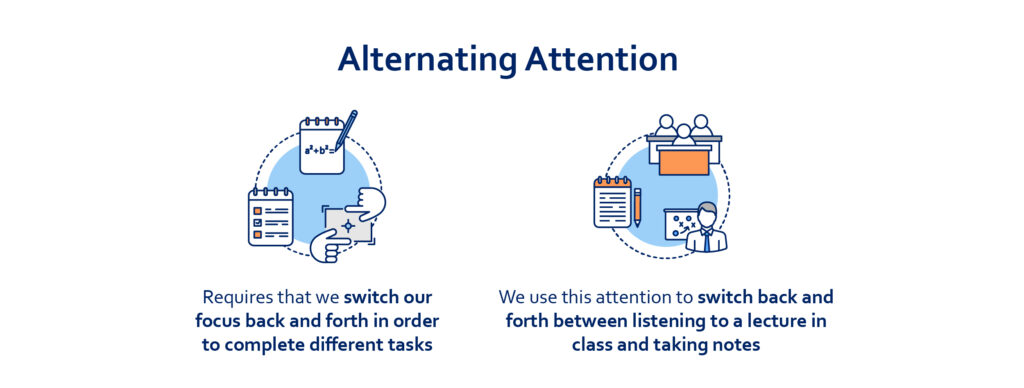How Attention Works
Attention is the ability to direct and maintain focus for a given period of time while ignoring distractions. It is an important filter that plays a critical role in our learning. Information can only be processed and remembered if it makes it through our attentional controls.
On average, we process 11 million bits of information every second. However, our brain discards 99% of the information we are exposed to. This begs the question: how do we decide what to process and what not to process? Here is where attention comes into play.
Attention is the ability to direct and maintain focus for a given period of time while ignoring distractions. It is an important filter that plays a critical role in our learning. Information can only be processed and remembered if it makes it through our attentional controls. Attention is the first processing skill to be tasked when we are receiving information. That being said, due to the interdependency of our processing skills, our ability to pay attention does not function in isolation. As teachers it is crucial to know how to keep students’ attention, since inattentiveness can lead to poor learning outcomes, disinterest in learning, and misdiagnosis.
When learning we constantly rely on our attention. However, it is important to know that there are four types of attention, and different situations call for different ones. The first type of attention is Sustained Attention, which allows us to focus on one thing for long periods of time. As an example, we use this type of attention when we read long texts.

The second type is Selective Attention; it allows us to focus on one stimulus while ignoring distractions, like when we are trying to complete an exam while at the same time disregarding the noise coming from the street or the hallway.

The third type, Alternating Attention, helps us switch focus quickly from one task to another. This type of attention is key when we alternate between listening to a lecture and taking notes.

Finally, the fourth type of attention is Divided Attention. It allows us to do more than one thing at once, which is why it is also known as multitasking. We use this type of attention when we drive while listening to music, when we play video games, or when we scroll through social media.

References:
- Costandi, M. (2016). Neuroplasticity. MIT Press
- Maguire, E. A., Woollett, K., & Spiers, H. J. (2006). London taxi drivers and bus drivers: a structural MRI and neuropsychological analysis. Hippocampus, 16(12), 1091-1101. https://doi.org/10.1002/hipo.20233
- Taya, F., Sun, Y., Babiloni, F., Thakor, N., & Bezerianos, A. (2015). Brain enhancement through cognitive training: A new insight from brain connectome. Frontiers in Systems Neuroscience, 9, Article 44. https://doi.org/10.3389/fnsys.2015.00044
Learn evidence-based strategies to motivate and engage students in the classroom (Module 11 Teach for Belonging II (Engagement & Motivation))
Discover the relationship between attention and other processing skills: working memory and processing speed (Module 3: Addressing Processing Speed)
Further Resources

Science of Learning Insights to Your Inbox.
Our editors will deliver evidence-based insights to deepen your understanding of the science behind effective teaching and learning.